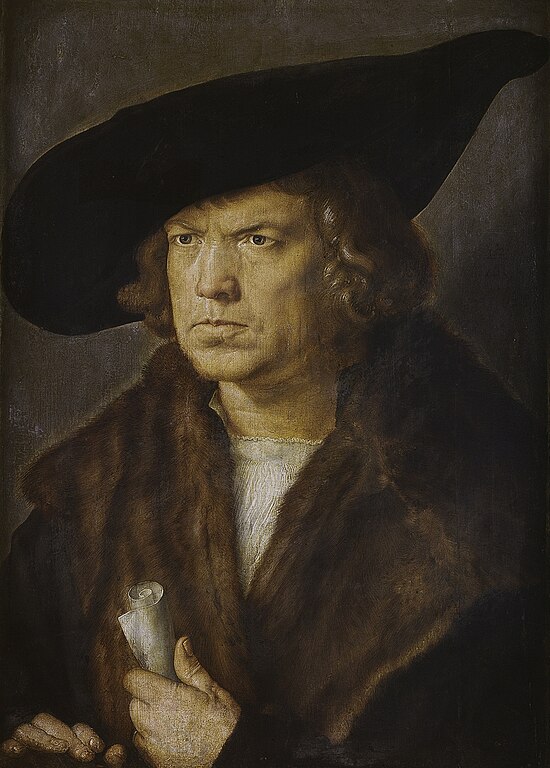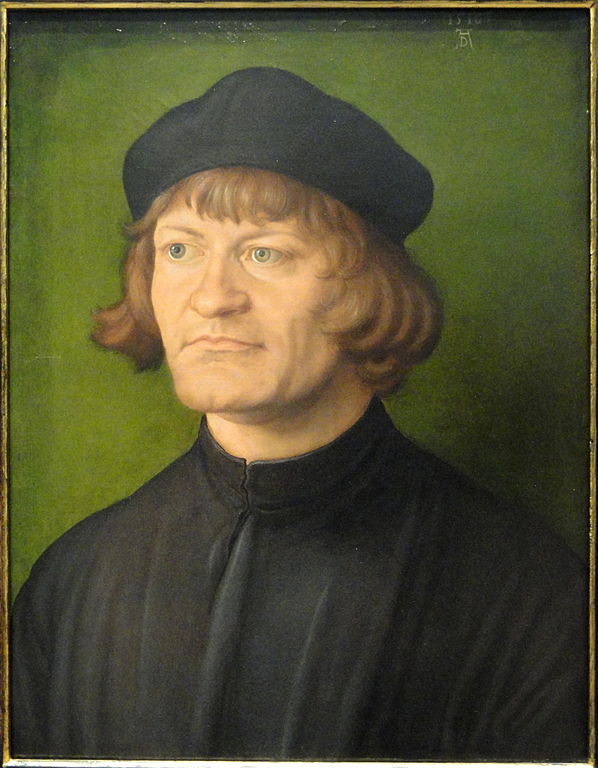From 23 October 2013 to 2 February 2014, Frankfurt's Städel Museum, will present a comprehensive survey of the work of Albrecht Dürer (1471–1528).
The exhibition will encompass a total of more than 250 works, including some 190 by
Dürer, among them

the repentant Penitent Saint Jerome (ca. 1496) from the National Gallery in London,

the Portrait of an Unidentified Man (1521) from the Prado in Madrid,

and the famous Portrait of a Clergyman (1516) from the National Gallery of Art in Washington.
Further extremely important works will be coming from the Paris Louvre, the British Museum
(London), the Staatliche Museen zu Berlin, the Uffizi in Florence, the Rijksmuseum
(Amsterdam) and the J. Paul Getty Museum (Los Angeles).
One of the exhibition’s highlights will be the reunion of the panels of the so-called

Heller Altarpiece (1508)
which Dürer executed jointly with Mathis Gothart Nithart, called Grünewald, for a
prominent Frankfurt patron in 1507–09. Today scattered among the Historisches
Museum Frankfurt, the Staatliche Kunsthalle Karlsruhe and the Städel Museum, the
panels of the altar retable originally intended for the church of the Dominican
monastery of Frankfurt will be brought together again for the first time by the
exhibition.
Altogether, the presentation will introduce the oeuvre of the German
master in the entire breadth and wealth of his artistic expression. Twenty-five panel
and canvas paintings, eighty drawings, a further eighty works executed in various
printmaking techniques, and books written and illustrated by Albrecht Dürer will be on
view.
What is more, these works will be juxtaposed with examples by forerunners and
contemporaries who were of importance to the artist – whether because he creatively
explored their achievements, or because his own works served as points of departure
for a new rendering in the oeuvre of a colleague. To this end, some seventy
examples by such artists as Martin Schongauer, Hans Baldung Grien, Hans von
Kulmbach, Jacopo de’Barbari, Giovanni Bellini, Joos van Cleve or Lucas van Leyden
will enhance this major exhibition project. Through this form of contextualization, the
viewer will be acquainted not only with the exceptional creative power and artistic
quality of Dürer’s oeuvre, but also with his decisive contribution to the emergence of
Northern European Renaissance art.
With its outstanding holdings in the area of German, Dutch, and Italian art of the Late
Middle Ages and the Early Modern period, the Städel Museum is one of the world’s
most prominent collections. It is thus in a position to serve regularly as a point of
departure for internationally acclaimed Old Master exhibitions, for example “Cranach
the Elder” (2007/08), “The Master of Flémalle and Rogier van der Weyden” (2008/09)
and “Botticelli” (2009/10).
This series is now being continued with a comprehensive Dürer exhibition whose
thematic concept once again builds on the Städel Museum’s special strengths.
The museum has in its possession two major Dürer paintings –

the portrait of the so-called Fürlegerin (Portrait of a Young Woman with
Her Hair Worn Loose, 1497),

and the depiction of Job on the Dung Heap (1505).
It also has in its holdings a number of superb drawings as well as a comprehensive suite of
woodcuts and engravings. As a result, important stages in Dürer’s artistic activities
and development can already be retraced on the basis of the Frankfurt holdings
alone. What is more, the Städel Museum’s Old Masters Department and Department
of Prints and Drawings also encompass important works of contemporary German,
Dutch and Italian painting without whose contemplation the art of Albrecht Dürer must
appear to the present-day viewer as strangely isolated – ultimately as a result of the
genius cult of the nineteenth century.
The show will accordingly shed light on Dürer’s preoccupation with the “Master of the Housebook” and Martin Schongauer,
with major Early Netherlanders such as Jan van Eyck, Rogier van der Weyden and Hugo
van der Goes, with the “Master of the Groote Adoration”, Joos van Cleve and Quentin
Massys, but also with Venetian painting as splendidly exemplified by Giovanni Bellini.
The exhibition will be accompanied by a comprehensive catalogue edited by Jochen
Sander and containing a foreword by Max Hollein and texts by Jeffrey Chipps Smith,
Katrin Dyballa, Erik Eising, Christian Feest, Karoline Feulner, Stephan Kemperdick,
Hans Körner, Christof Metzger, Andrew Morrall, Ulrich Pfisterer, Almut Pollmer-
Schmidt, Jochen Sander, Johann Schulz, Jeroen Stumpel and Berit Wagner.
German/English edition, approx. 400 pages, Prestel Verlag.
More Albrecht Dürer in the exhibition:

Adam and Eve, 1504

Brennerstraße im Eisacktal, about 1495
Ehrenpforte für Kaiser Maximilian I, 1517-1518
Herkules im Kampf gegen die stymphalischen Vögel, 1500

Melancolia I, 1514
Nemesis or The Large Fortune, around 1501
Nürnbergerin und Venezianerin, around 1495
Portrait of Barbara Dürer, 1490
Portrait of Elsbeth Tucher, 1499

The Horseman
Trommler und Pfeiffer, around 1502